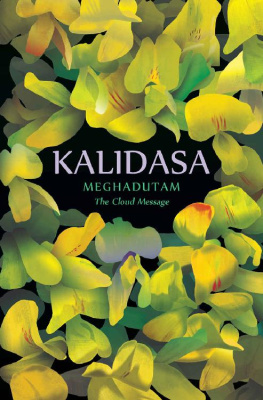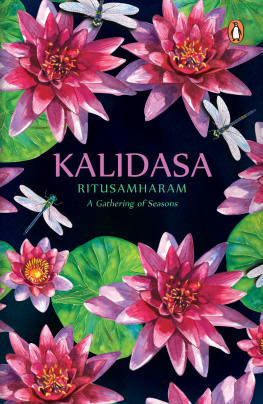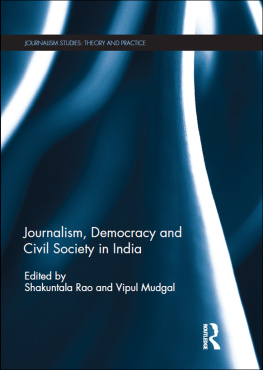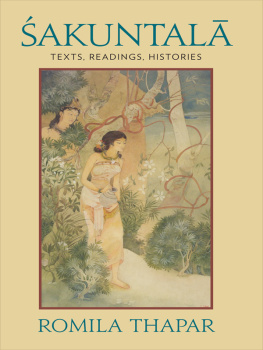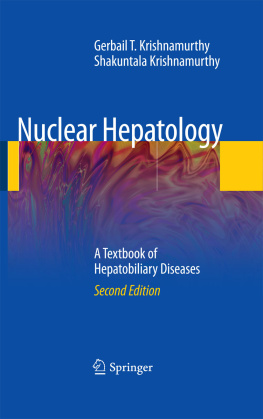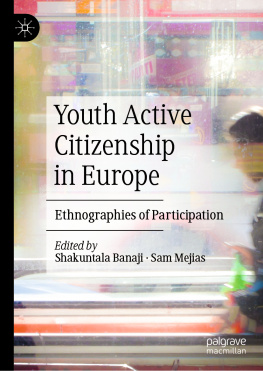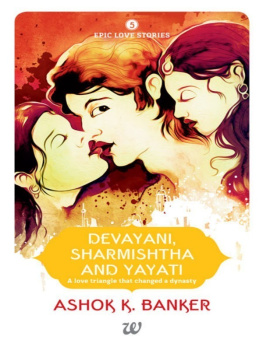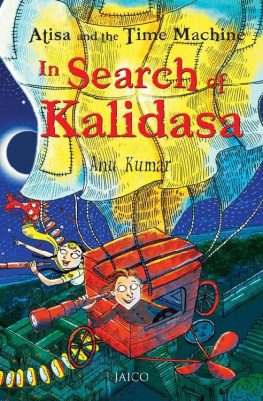Kalidasa - Abhijñānashākuntalam: The Recognition of Shakuntala
Here you can read online Kalidasa - Abhijñānashākuntalam: The Recognition of Shakuntala full text of the book (entire story) in english for free. Download pdf and epub, get meaning, cover and reviews about this ebook. year: 2016, publisher: Penguin Books Ltd, genre: Art. Description of the work, (preface) as well as reviews are available. Best literature library LitArk.com created for fans of good reading and offers a wide selection of genres:
Romance novel
Science fiction
Adventure
Detective
Science
History
Home and family
Prose
Art
Politics
Computer
Non-fiction
Religion
Business
Children
Humor
Choose a favorite category and find really read worthwhile books. Enjoy immersion in the world of imagination, feel the emotions of the characters or learn something new for yourself, make an fascinating discovery.
Abhijñānashākuntalam: The Recognition of Shakuntala: summary, description and annotation
We offer to read an annotation, description, summary or preface (depends on what the author of the book "Abhijñānashākuntalam: The Recognition of Shakuntala" wrote himself). If you haven't found the necessary information about the book — write in the comments, we will try to find it.
Abhijñānashākuntalam: The Recognition of Shakuntala — read online for free the complete book (whole text) full work
Below is the text of the book, divided by pages. System saving the place of the last page read, allows you to conveniently read the book "Abhijñānashākuntalam: The Recognition of Shakuntala" online for free, without having to search again every time where you left off. Put a bookmark, and you can go to the page where you finished reading at any time.
Font size:
Interval:
Bookmark:



PENGUIN BOOKS

PENGUIN BOOKS
for
Aneesha Dharwadker,
architect,
and
Sachin Dharwadker,
film-maker
DUSHYANTA (looking down): In our descent at high speed, the world of human beings is a truly amazing sight. For
The flat ground remains farther away
As the peaks of mountains zoom towards us;
Trees cease to be indistinguishable in a mass of green
As their branches become distinct to our sight;
Fine lines in the distance, without a trace of water,
Now acquire breadth and visibility, and become rivers.
Look, the earth seems to move closer and closer,
As though someone were heaving it up towards me.
MTALI : Your observation is exact. (He gazes in awe and wonder.) Oh, the earths beauty is sublime!
Klidsa, Shakuntal, Act VII
(circa 400 CE )
Klidsas Shakuntal is a play that dramatizes a love story. It is the earliest play in world drama and theatre to be centred on a comprehensive narrative about love, and it is the oldest of the complete, free-standing works in any genre of literature around the globe to be focused on this theme. It develops a vivid representation of the process of falling in love, of infatuation and passionate union, of separation and failed reunion, of finding and losing and regaining a soulmate, and of reuniting in a child and living happily ever after. In fact, it defines the paradigm of romantic comedy for future times, but it is an extended comedy with tragic and serious elements set in a heroic frame.
Shakuntal is a full-bodied play that enacts the story of Dushyanta and Shakuntal in seven acts, with a large cast of lively, memorable characters. It is composed in a combination of prose and verse in the Sanskrit and Prakrit languages, and most probably acquired its finished form around 400 CE . It belongs to Indian literature in its classical period (4001200 CE , approximately), which coincides broadly with a period of extraordinary development in the dramatic and performing arts across the subcontinent. During the interval of about 1000 years between the third and thirteenth centuriesfrom the last Senecan tragedy to the earliest significant Chinese dramaIndia is the only place in the world with a vibrant, multilateral theatrical culture, and Shakuntal is the finest of the SanskritPrakrit plays to emerge in that environment.
This dramatic work is traditionally attributed to Klidsa, who may have been a historical figure around the turn of the fifth century, a poet and a playwright working under the court patronage of Chandragupta Vikramaditya, the most famous of the imperial rulers of the Gupta dynasty in north India. Despite the concerted efforts of dozens of scholars since the late eighteenth century, however, it is still not possible to formulate a single fact about Klidsas career or personality, and everything that is said about him as a flesh-and-blood individual remains speculative in the end.
Nonetheless, the text of Shakuntal has been transmitted to the modern period in determinate manuscript forms, and we can correlate it in a variety of ways with a stream of literary references, quotations, analyses, evaluations, critiques, and commentaries in Sanskrit since about the eighth century, the middle of the classical period.
As one of the paradigmatic plays in world drama, and as the most famous individual dramatic work in the history of theatre outside Europe, Shakuntal is the focus of a long, widespread, and distinguished tradition of translation. William Joness inaugural rendering in English, based on an unedited form of the play in the Bengal recension, appears in England in 1789 (shortly before the French Revolution), and triggers other translations not only in the worlds modern languages but also in those of India itself. In proximity and at a distance in time and space as well as language and culture, Joness translation generates an unprecedented order of imaginative discovery and rediscovery around the globe until the mid-twentieth century, stimulating assessments and reassessments of the text, ideological appropriations and re-appropriations of classical India, and fresh production across the arts and media, together with renewed performance on the stage.
In this worldwide web, however, a large number of the modern lines of transmission originate in indirect rather than direct translation. The pattern of indirect dissemination outside India is fully evident at its earliest stage: George Forsters German version of Shakuntal of 1791, for instance, which alters the course of the Sturm und Drang movement and of Weimar classicism, is not a rendering of a SanskritPrakrit source but a translation of Joness English version, which is based on the latters own intermediary interlinear rendition in Latin prose. What offsets the proliferation of indirect derivations in the long run is the periodic return to the classical text, especially among scholars and commentators in the modern Indian languages after the mid-nineteenth centuryeven though their access to the past is mediated thoroughly by Orientalism and modernity.
For any translator of Shakuntal today, the problem at the core of this intransigent web-work spills over in two directions at once. In one, he or she has to negotiate extensively with the intricacy of Sanskrit as a language (of which both Greek and Latin are virtual subsets), and of the SanskritPrakrit literary system, its dramatic tradition, and its historical and aesthetic contexts. In the other direction, he or she has to fully accommodate the qualities of Klidsas play, as a poem in prose and verse and as a superb performance vehicle, which require sustained immersion, not only in literary practice and theatre-craft across genres and periods, but also in the separate practice of poetic translation.
In this book, I offer twenty-first-century readers a brand-new translation of Shakuntal, which balances multilingual scholarly access to the SanskritPrakrit text and its discursive environment with literary representation in English that draws on a practitioners experience in poetry, poetics, and translation spanning four decades. Unlike previous translations in this language, my rendering here attempts to reproduce Klidsas poetic devices, figures, and effects in precise detail, and to transpose the shape as well as the substance of his primary and secondary plots and tertiary incidents on to this language without loss. At the same time, my version seeks to capture the liveliness of the dialogue, the dynamic evolution of three-dimensional characters, and the dramatic quality and thematic range of the whole with its fifty or more speaking parts onstage. My translation starts from scratch with the SanskritPrakrit texture of the Devanagari recension, and hence offers new interpretations of the larger and finer features of the play, resolves long-standing issues of syntax and semantics, and offers fresh solutions to persistent problems of interlingual and aesthetic representation.
Font size:
Interval:
Bookmark:
Similar books «Abhijñānashākuntalam: The Recognition of Shakuntala»
Look at similar books to Abhijñānashākuntalam: The Recognition of Shakuntala. We have selected literature similar in name and meaning in the hope of providing readers with more options to find new, interesting, not yet read works.
Discussion, reviews of the book Abhijñānashākuntalam: The Recognition of Shakuntala and just readers' own opinions. Leave your comments, write what you think about the work, its meaning or the main characters. Specify what exactly you liked and what you didn't like, and why you think so.


